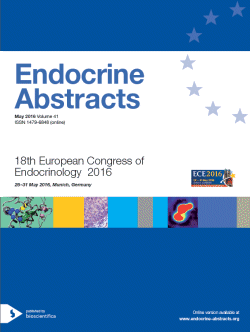Searchable abstracts of presentations at key conferences in endocrinology
Symposia
An update on hyperparathyroidism
ea0041s21.1 | An update on hyperparathyroidism | ECE2016
Primary hyperparathyroidism: what is new?
Primary hyperparathyroidism (PHPT) is a common endocrine disorder, with a prevalence of 14 per 1000, that increases to 21 per 1000 in age groups 5575 years. PHPT may be cured in only one way: by surgical excision of the abnormal parathyroid tissue, which in ~85% of patients is due to a parathyroid adenoma. Double adenomas are found in ~4% of cases and parathyroid carcinoma in 1%. There is consensus that patients with markedly increased serum calcium concentrations,...
ea0041s21.2 | An update on hyperparathyroidism | ECE2016
Hyperparathyroidism, hypertension and hyperaldosteronism
Primary aldosteronism (PA) is the most frequent cause of endocrine arterial hypertension. PA is known to cause a higher cardiovascular morbidity, which is reduced by specific therapy of PA. Numerous studies suggest that mineralocorticoid excess may influence mineral homeostasis. On the other side, parathyroid hormone excess has been linked to cardiovascular disease. Increasing evidence supports a bidirectional interaction between aldosterone and PTH which might lead to a highe...
ea0041s21.3 | An update on hyperparathyroidism | ECE2016
What is new in imaging and surgery for hyperparathyroidism
During last few decades primary hyperparathyroidism (PHP) evolved from the disease of bones, moans, stones and groans to a disorder that is most commonly asymptomatic and incidentally diagnosed with increasing biochemical screening. At the same time different localization studies of the abnormal parathyroid gland(s) emerged. Because PHP is caused in more than 85% of patients with a single gland adenoma which can be reliably localized preoperatively, there has been ...




